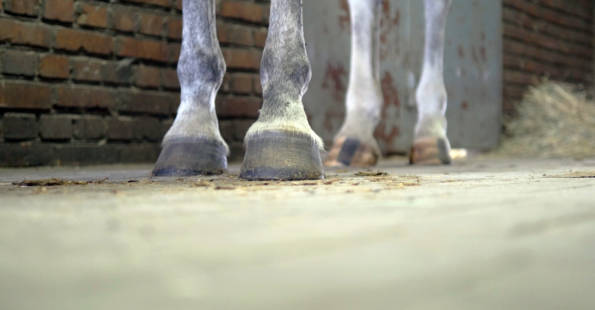Friday 24th May, 2019

It is laminitis season, and horse owners everywhere are having to keep a close eye on their equines. The disease can affect horses of all ages and is both incredibly painful and debilitating. Research shows that laminitis is as common as colic across Britain, so it is vital that you are able to recognise the signs. Read on to find out what you need to look out for.
Laminitis is quite literally the inflammation or swelling of the laminae, soft tissue layers within the hoof wall. The inflammation is often caused by movement of the Pedal bone. Laminitis was always thought to be caused by the lush spring grass. Although we now know this is not true, it can trigger laminitis due to an underlying condition.
The main cause of laminitis is a hormonal condition called Cushing’s Disease. This condition can lead to laminitis because it affects the horse’s ability to process sugars in their diet, which does mean that sweet spring grass can have an impact on your horses’ feet indirectly. Other causes include overload laminitis, where horses bear excessive weight in one leg to compensate for a serious injury to the other leg.
The signs of laminitis can vary wildly, and not all horses will suffer the same symptoms. However, most will experience one or more of the following:
First and foremost, laminitis must be diagnosed by a veterinarian prior to any treatment. You can relieve your horse’s discomfort by providing him with a soft, deep bed and rubber matting in a stable. This will cushion his feet and support his body so that he can rest and recuperate. Make sure that your stable or stall is spacious so that he can move around freely. It is important that your horse remains as mobile as possible however, so that he doesn’t seize up. Turning out in a smaller paddock alongside his stablemates will help maintain good circulation and promote healing.
It is true that some cases of laminitis can be too difficult to manage due to the extent of damage that has been inflicted to the hoof wall. Happily, this is a rare event and most cases of laminitis can be quickly treated and carefully managed to avoid reoccurrence.